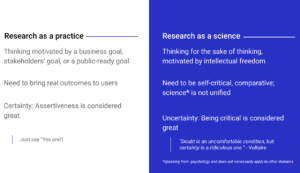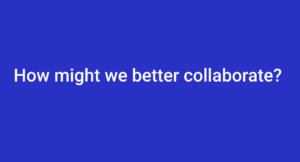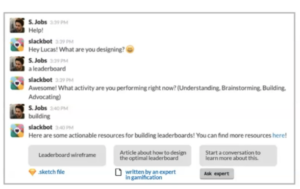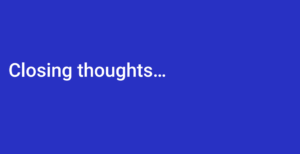AR2021-When Thought Worlds Collide (Lin Nie, Peloton)

—> If we were sitting next to each other on airplane, and you asked me to explain talk, I’d say the talk is about being misunderstood, and navigating an identity crisis transitioning out of academia

-
What did they observe in me that made them think work was too academic?

-
Stakeholders complain user research is not practical, while researchers claim their ideas are ignored by product development

-
Bad divided feeling I got being citizen in the world at this time was similar to her transition from academia to industry
-
I realized how I worked was integrated with all aspects of her identity

—> So given this, what are thought worlds?

-
Your user research default is often different from what others think is research
-
There is a gap between foundational research and design practice
-
And the gap goes from top and bottom
-
-
All fields connected, however, in the problem that is being tackled

-
Product Manager with voice assistant asking about what personality should have, i.e. a seeming basic question (yes/no)
-
Academic wanted to know what is “ a personality”
-
In both cases, the product manager is focused on solving an immediate problem, while the academic wants to consider the macro implications of that problem (i.e. what are the limits of attention? What is cognition?)

-
Researchers don’t influence practicioners
-
Few translators go between the worlds, at least on Twitter

-
Multi-disciplinary work is the norm
-
We need translators to meet the new norm and UXRs with diverse backgrounds are important to facilitate understanding between thought-worlds


-
List of well known differences
-
Design is fast and accessible, while academia is slow and not easy to act on

-
In practice you are always doing something for a goal.
-
In science, there is a lot of thinking for the sake of thinking
-
In the research practice, real outcomes to users are the main goal
-
Science, being self-critical and taking time to get to conclusion
- As an aside, psychology is about making probabilistic statement about world, and making implicit assumptions explicit, rather than claims of absolute truth


-
Let’s use a final publication as snapshot

-
Abstract: Snapshot of paper
-
Intro: Bring readers up to speed about topic at large, and how research will help address topic
-
Method: How data collected
-
Results: What we got
-
Discussions: The “So what” of the finding, and the limitations of our discussion

-
Matter of chance, strategy, marketing
-
Science in practice shows otherwise, such as the story of Copernicus, where people were unconvinced, and research was seen as contradicting the spirit of the time
-
WEB Dubois, when asked to conduct research on black rural life, spoke with 20,000 residents and compiled a thorough report based off his research data
-
While his work contained innovative design elements and key insights, the government just ignored the report and threw it in the trash
-

-
So how do truth-tellers get work to the world?

-
List of references included in the slide and in Slack discussion?

-
Lack of attention
-
Lack of trust

—> Assuming research is solid and contains worthy insight, focus on designing the messaging, and assume stakeholders lack attention span, and think of how to post finding in a way that it’s read

-
Are not too long
-
Minimize jargon
-
Highlight credentials
-
Use visualizaitons
-
Adapt presentation to audience level of environment

—> Second tip: Translate scholarly content to be more actionable and to the point


—> Give audience what they need to know and visualize a user quote to go with number

-
Reviewed 1200 profiles over 12 cities to determine what topics will show more trust and influence user decision to buy
-
Relevant to industry and design, but hard for stakeholders to find/understand


—> Example of virtual assistant tool on Slack, where the tool just gives articles relevant to the designer’s ask

-
In social context of information, need to care about people doing the sharing

-
Ask teams from different thought worlds to ask about roles, goals, and passions outside of work?

-
The goal though is to steer conflict into ‘debate’ zone, focused on low emotional intensity, and clear direct communication.

-
Strong teams communicate their misinterpretation clearly to others

-
But the heart of topic about research practice is about making different worlds/identities understand each other
-
This can be crazy, but it’s worth giving it a shot

-
She has found that focusing on proving someone wrong, really means you are not seeing people in front of you.
-
From poet Claudia Rankine: “It’s our job to see the person in front of us, and if that means having an uncomfortable conversation, have that conversation, please.”
-
From Carl Jung: “Know all the theories, master all the techniques, but as you touch a human soul, be just another human soul.”


